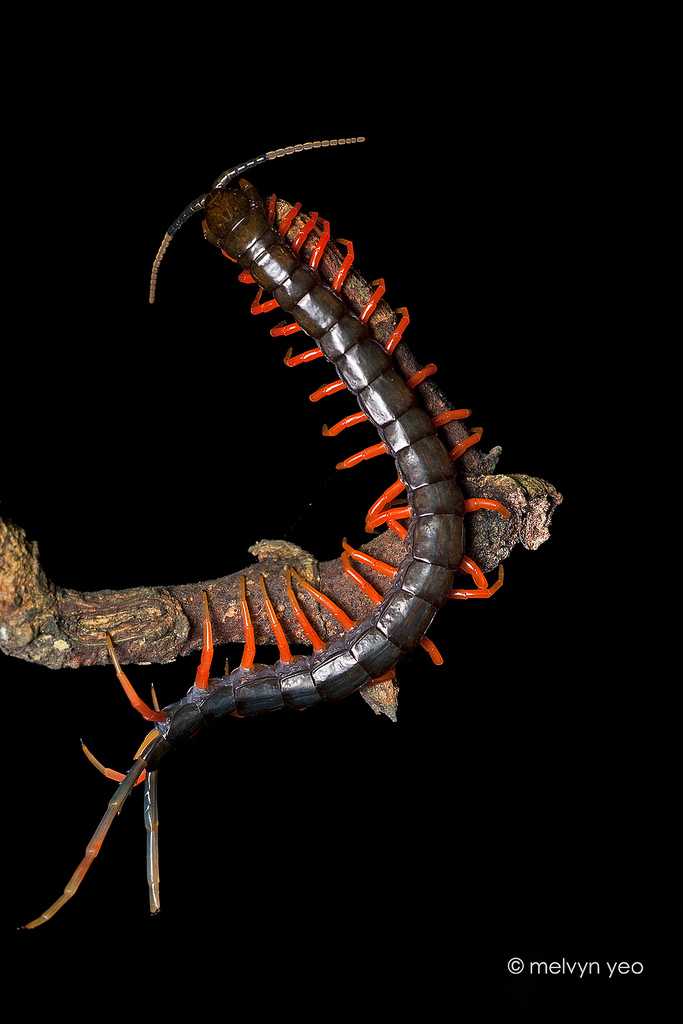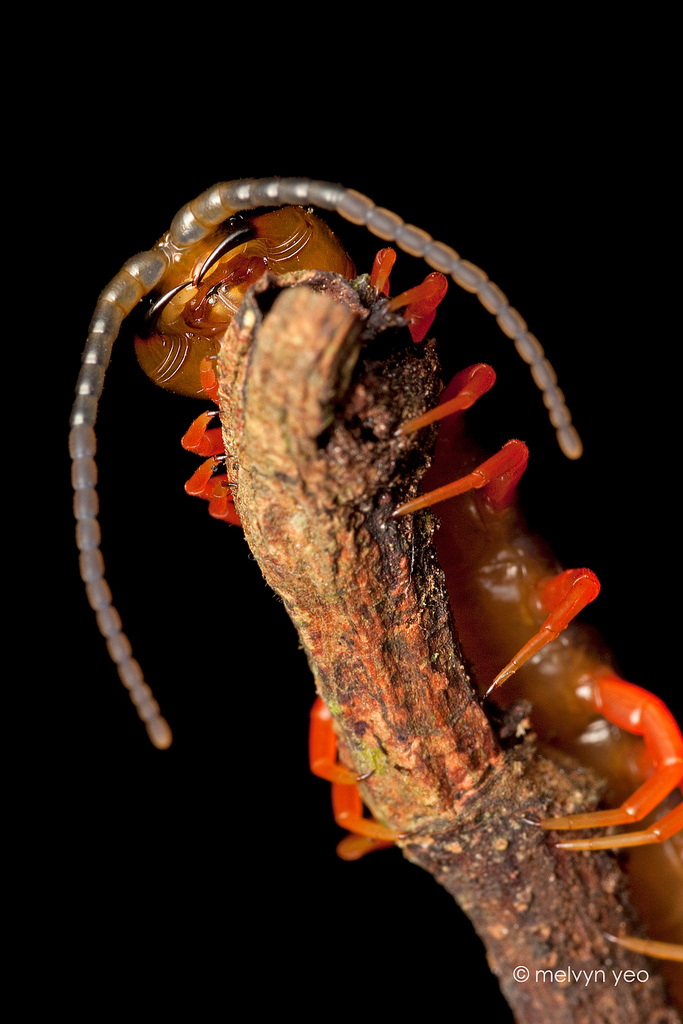
Centipedes (from Latin prefix centi-, "hundred", and pes, pedis, "foot") are arthropods belonging to the class Chilopoda of the subphylum Myriapoda.
They are elongated metameric animals with one pair of legs per body segment. Despite the name, centipedes can have a varying number of legs from under 20 to over 300. Centipedes have an odd number of pairs of legs, e.g. 15 or 17 pairs of legs (30 or 34 legs) but never 16 pairs (32 legs).
A key trait uniting this group is a pair of venom claws or "forcipules" formed from a modified first appendage. Forcipules are a unique feature found only in centipedes and in no other arthropods. The forcipules are modifications of the first pair of legs, forming a pincer-like appendage always found just behind the head. Forcipules are not true mouthparts, although they are used in the capture of prey items, injecting venom and holding onto captured prey. Venom glands run through a tube almost to the tip of each forcipule.
Centipedes have a rounded or flattened head, bearing a pair of antennae at the forward margin. They have a pair of elongated mandibles, and two pairs of maxillae. The first pair of maxillae form the lower lip, and bear short palps. The first pair of limbs stretch forward from the body to cover the remainder of the mouth. These limbs, or maxillipeds, end in sharp claws and include venom glands that help the animal to kill or paralyse its prey.
Centipedes possess a variable number of ocelli, which are sometimes clustered together to form true compound eyes. Even so, it appears that centipedes are only capable of discerning light and dark, and not of true vision. Indeed, many species lack eyes altogether. In some species the final pair of legs act as sense organs similar to antennae, but facing backwards. An unusual sense organ found in some groups are the organs of Tömösvary. These are located at the base of the antennae, and consist of a disc-like structure with a central pore surrounded by sensory cells. They are probably used for sensing vibrations, and may even provide a sense of hearing.






No comments:
Post a Comment